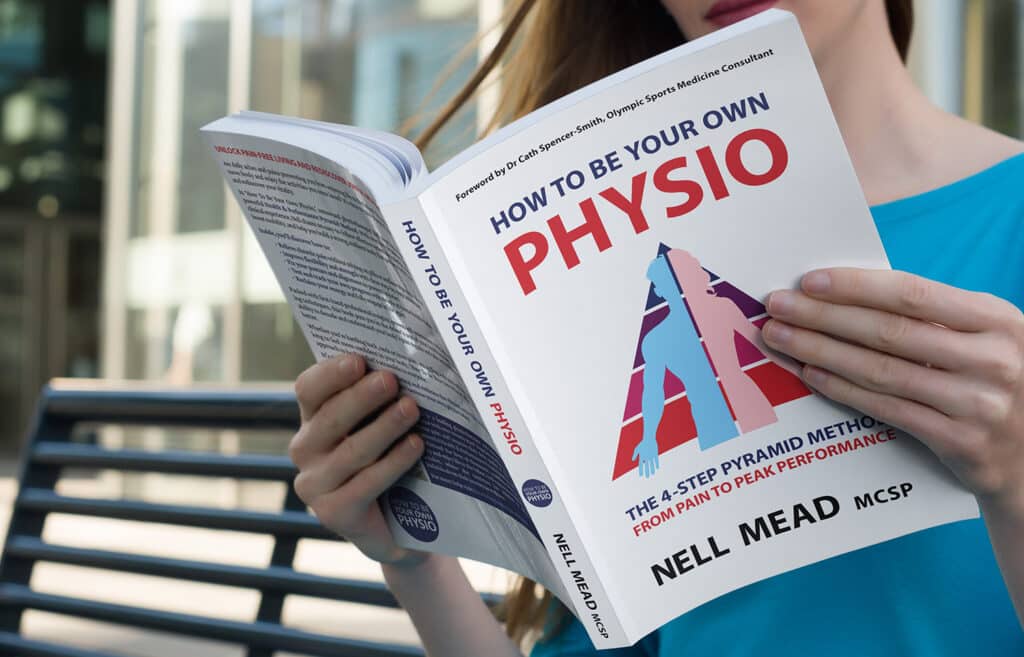In my last post, I explained how having a stiff and unyielding pelvis can be a real pain in the knee. But it’s not fair to leave you hanging, so here’s the solution.
The first step is to release the tightness in the low back and pelvis joints. To do that, you need to release the surrounding muscle spasm and then stretch out the muscles and ligaments that are holding the joints so stiffly. This will help to flush out the joints, encouraging the synovial fluid inside them to become more liquid and less viscous, allowing more nutrients in and more waste products out.
I often release the low back and pelvis joints using my feet, in line with the Sarah Key Method. This is quick, effective and quite gentle, and it gives a “kick-start” to the exercises, which allow you to maintain and improve on the changes we achieve in the treatment session. However, in many cases it is also possible to make significant gains with just the exercises.
Therefore, for home treatment, the two exercises I really recommend to release the low back and pelvis are the appeasing exercise and a variation on the back block exercise. Alternate them, doing three sets of each exercise for 30 seconds each, 2–3 times per day, and your pelvis should soon start to free up.
The variation on the back block exercise is that instead of placing the block horizontally under your pelvis, this time I’d like you to place it vertically — so that it points down towards your feet. The upper end should still be under your pelvis though, not under your low back. Then, once you’ve lowered your bottom onto the block, instead of sliding your feet away from you, just drop your knees apart, something like this picture. If your adductors (inner thigh muscles) are tight, you may well feel a stretch there; if they’re loose, you’ll feel a stretch at the back of your pelvis as the “wings” stretch apart. Hold the position for 30 seconds before drawing your knees back together, removing the block from under your pelvis, and resuming the appeasing exercise.
The second step is to stretch your hamstrings, with particular emphasis on the distal (knee) end. Traditional hamstring stretches, where you bend forward with knees straight, focus on the proximal (hip) end of the muscle; but people with knee pain tend to be tighter near the knee.
To emphasise the distal end of the hamstring, you need to start with your hip fully flexed, and then gradually extend the knee. So, as demonstrated here by the lovely Helen, stand in front of a chair (preferably one without wheels!) and place one foot on the seat. Bend forward at the torso and get your chest right onto your thigh. Hug your thigh tightly with both arms, so that your chest stays attached to it throughout the stretch.
Gradually lean your bodyweight backwards so that your raised knee starts to straighten out. Go as far as you can, until you feel as though your chest wants to lift, then hold the position for 10 seconds. Release slightly and then lean back into the stretch for a further 2 x 10 seconds, then repeat with the other leg.
Another really useful treatment is massage. You may well find that you have tight, sore trigger points in your buttocks, hamstrings, adductors and/or iliotibial bands (fascia that covers the outer thighs). Stretching can be significantly aided by massage to get rid of these small localised areas of muscle spasm. You can either get someone to help you with this (if your helper is not a trained therapist, ask them to start gently and work their way in: kinder and more effective than an aggressive pounding!) or you can self-treat using a foam roller. I really like this comprehensive YouTube video from Alex Poole that shows some effective foam roller techniques.
NB — Please note that although I am an experienced physiotherapist, unless I have examined you, I am unable to give individual advice about your specific case. Every case is different, and this blog reflects cases I have seen in the past and is not a substitute for individual medical advice. You must not rely on the information on my website as an alternative to medical advice from your doctor or other professional healthcare provider. If you have any specific questions about any medical matter, you should consult your doctor or other professional healthcare provider. You should never delay seeking medical advice, disregard medical advice or discontinue medical treatment because of information on my blog. However, if you would like individual advice, please do call 0207 175 0150 to arrange an assessment.







